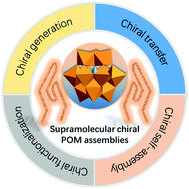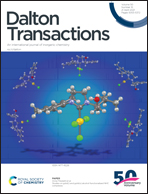Constructing chiral polyoxometalate assemblies via supramolecular approaches
Abstract
Polyoxometalates (POMs), as a typical class of discrete metal oxide clusters that are known in inorganic and structural chemistry since long, have displayed more and more interesting applications over recent years. However, in comparison to the chemical synthesis, the photochemical, electrochemical, and magnetic properties, the structural asymmetry, and relative characteristic investigations arising therefrom are far behind even if they are very important for functional materials, especially in solution systems. One of the main reasons is that it is hard to control and maintain a stable chiral state of POMs to carry out further corresponding performances. Aiming to overcome these disadvantages, the main concerns of this review are to discuss the generation of the chirality for discrete metal oxide clusters, chirality transfer via a supramolecular approach, chirality amplification in self-assemblies, and the related functional properties such as photochromism, catalysis, and bioactivities in solutions. Considering that some previous reviews dealt with chiral structures and packing architectures in the crystalline solids of POMs, this article only concentrates on the induced chirality and material properties in solution systems, which have been more active recently but no review article has been involved in this interesting area.

- This article is part of the themed collection: 2021 Frontier and Perspective articles


 Please wait while we load your content...
Please wait while we load your content...